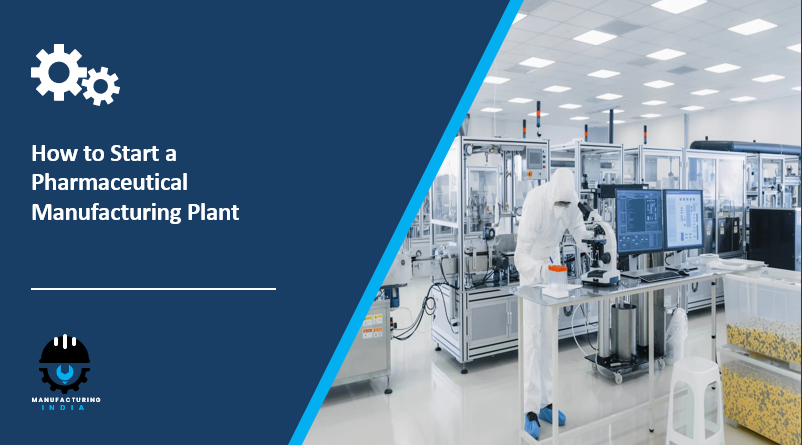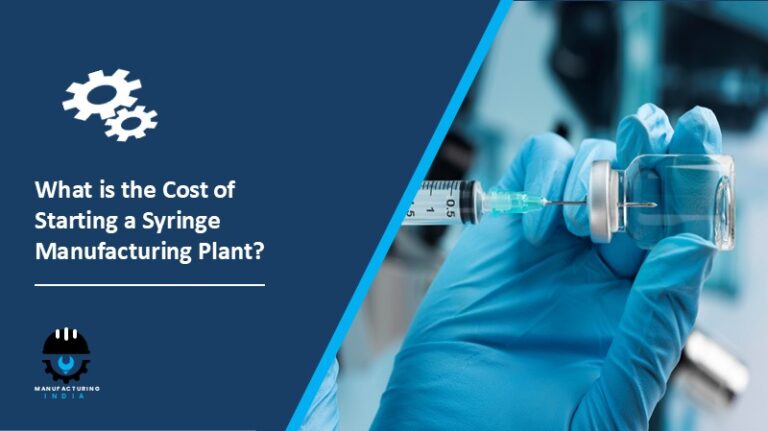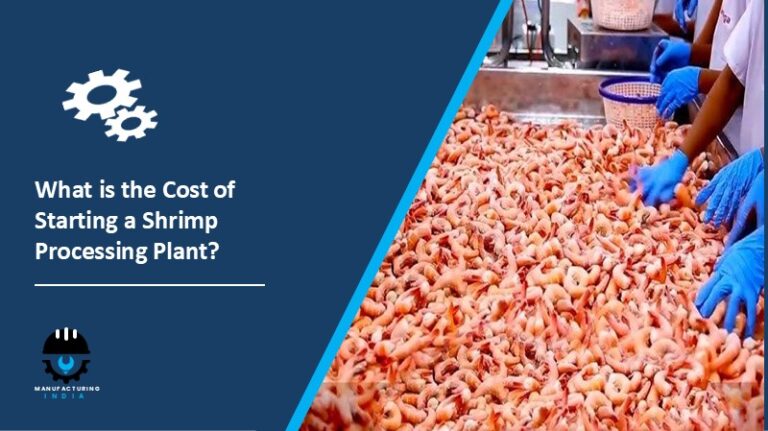
The pharmaceutical manufacturing industry forms the backbone of global healthcare systems, serving diverse segments from hospital networks to retail pharmacies and contract manufacturing organizations. With increasing healthcare accessibility and growing demand for quality medicines, establishing a pharmaceutical manufacturing plant presents a substantial business opportunity.
The pharmaceutical manufacturing industry is complex and capital-intensive with significant potential for committed entrants. However, this venture requires meticulous planning, substantial investment, and stringent compliance with drug regulatory frameworks. From active pharmaceutical ingredient sourcing to quality assurance protocols, every phase must be executed with precision. Businesses can streamline this process by leveraging professional consulting services that provide feasibility analysis, regulatory guidance, and technical specifications.
Step-by-Step Guide to Setup Pharmaceutical Manufacturing Facility
Step 1: Conducting Market Research and Feasibility Study
Analyzing the Market:
Beyond traditional product segments such as antibiotics and analgesics, enterprises should consider emerging therapeutic trends. For example, demand for biologics, biosimilars, and specialty pharmaceuticals is accelerating, with companies developing dedicated production lines featuring advanced biotechnology capabilities and cold chain infrastructure.
Another significant aspect is the growing demand for generic medications as patents expire on blockbuster drugs. Several pharmaceutical companies have announced initiatives for transitioning to continuous manufacturing processes and adopting Quality by Design principles for enhanced product consistency.
Analyze the strategies and technologies offered by leading pharmaceutical manufacturers. Advanced manufacturing technologies including continuous processing, real-time analytical monitoring, and automated systems are designed to maximize yield, ensure consistency, and reduce production costs.
Businesses need to monitor regulatory developments, technological innovations, and therapeutic advancements constantly to gain competitive advantage. Expert market intelligence can help enterprises stay informed about pipeline opportunities, competitor strategies, and innovation landscapes. Companies can make data-driven decisions to enhance market positioning and drive sustainable growth through targeted therapeutic area selection.
A robust feasibility study is essential, considering regional factors. For instance, a facility in proximity to major pharmaceutical hubs might focus on complex formulations and exports, while operations in emerging markets might emphasize essential medicines and generic formulations addressing local healthcare needs.
Estimate the capital requirements for land acquisition, facility construction, specialized equipment, regulatory compliance, working capital, and research capabilities. Recent investments in pharmaceutical manufacturing highlight the significant financial commitments involved in establishing compliant production facilities.
Step 2: Business Plan Development
Include a comprehensive financial model considering initial capital expenditure and recurring operational costs. Address sustainability initiatives, which attract investors and regulatory support. Leading pharmaceutical companies are working towards environmental goals including solvent recovery, water conservation, and renewable energy adoption as part of their corporate responsibility programs.
Business Model: Determine whether to focus on formulation development, contract manufacturing for innovator companies, generic drug production, over-the-counter medications, specialty pharmaceuticals, or a strategic combination of these approaches.
Funding Strategy: Outline potential funding sources including equity investment from pharmaceutical-focused venture capital, commercial bank loans with government guarantees, grants for pharmaceutical infrastructure development, or strategic partnerships with established pharmaceutical corporations for technology transfer.
Production Capacity: Define target production volumes based on market analysis and equipment capabilities, considering whether to commence with focused product portfolios or establish multi-product manufacturing capabilities with flexible production lines.
Marketing and Sales Strategy: Develop comprehensive plans for brand development, distribution networks including pharmaceutical distributors and hospital supply chains, medical representative teams for prescription generation, regulatory strategy for product approvals, and digital engagement with healthcare professionals.
Risk Assessment: Identify potential challenges such as regulatory compliance failures, product recall scenarios, raw material supply disruptions, quality deviation management, intellectual property considerations, and develop mitigation strategies including supplier diversification and robust quality systems.
Step 3: Navigating Legal Requirements and Obtaining Necessary Permits
Compliance with pharmaceutical regulatory frameworks is paramount. Key requirements include:
Business Registration: Register your pharmaceutical company in accordance with corporate laws and pharmaceutical industry regulations, ensuring appropriate capital structure and management qualifications.
Manufacturing License: Obtain comprehensive manufacturing licenses from drug regulatory authorities following detailed facility inspection, demonstrating compliance with Good Manufacturing Practice standards and quality management systems.
Product Approvals: Secure individual product registrations with comprehensive documentation including manufacturing process descriptions, analytical methods, stability data, and quality specifications for each pharmaceutical product.
Quality Certifications: Pursue certifications including GMP compliance verification, ISO quality management standards, WHO prequalification for international markets, and country-specific certifications for export destinations.
Additional Clearances: Obtain environmental clearances for pharmaceutical manufacturing emissions and effluent management, factory licenses from industrial safety authorities, and drug testing laboratory accreditation for in-house quality control operations.
Step 4: Selecting an Optimal Location and Develop Infrastructure
Choosing the appropriate location critically influences operational efficiency. Consider these factors:
Proximity to Supply Chain: Access to active pharmaceutical ingredient manufacturers, excipient suppliers, analytical testing services, and packaging material vendors. Proximity to pharmaceutical clusters reduces logistics costs and facilitates technical collaboration.
Logistics and Distribution: Ensure connectivity to major healthcare markets, airport facilities for temperature-sensitive shipments, and distribution networks. Access to cold chain logistics and specialized pharmaceutical transportation is essential for maintaining product integrity.
Utilities Availability: Reliable electricity supply with backup generation for continuous operations, pharmaceutical-grade water production capabilities, HVAC systems for environmental control, compressed air systems, and steam generation for sterilization processes.
Infrastructure Requirements: Adequate space for segregated manufacturing zones including dispensing areas, processing halls with controlled environments, sterile manufacturing suites, packaging sections, quality control laboratories, raw material and finished product warehouses, administrative offices, and future expansion capabilities.
Step 5: Procuring Advanced Machinery and Quality Raw Materials
Investing in validated pharmaceutical equipment ensures regulatory compliance and consistent quality. Essential equipment includes:
Solid Dosage Manufacturing: High-shear granulators and fluid bed processors, compression machines with force monitoring, film coating systems with automated spray guns, capsule filling equipment, tablet inspection and sorting systems.
Liquid Manufacturing: Stainless steel mixing vessels with jacketed temperature control, homogenizers for uniform dispersion, liquid filling lines with dosing accuracy, capping and sealing equipment, in-line filtration systems.
Sterile Manufacturing: Laminar airflow workstations and isolators, vial washing and depyrogenation equipment, aseptic filling lines, terminal sterilization autoclaves, lyophilization systems for injectable products.
Quality Control Laboratory: High-performance liquid chromatography with automated samplers, dissolution testing apparatus, spectrophotometers for identification testing, microbiology incubators and testing equipment, stability chambers with controlled temperature and humidity, particle size analyzers.
Environmental Control Systems: Clean room HVAC with HEPA filtration, differential pressure monitoring systems, temperature and humidity control, air handling units with validation capabilities, personnel and material airlocks.
Support Infrastructure: Water purification systems including reverse osmosis and distillation units, effluent treatment plants for pharmaceutical waste, compressed air generation with oil-free compressors, backup power systems, building management systems for environmental monitoring.
Raw Material Requirements:
Source pharmaceutical-grade materials from certified suppliers including active pharmaceutical ingredients with supporting Drug Master Files, excipients meeting compendial specifications, pharmaceutical-grade water systems, packaging materials with appropriate barrier properties including blister foils, bottles with child-resistant closures, and tamper-evident seals ensuring product protection and regulatory compliance.
Step 6: Building a Skilled Workforce
Recruiting qualified personnel is crucial for pharmaceutical operations. Key positions include:
Technical Leadership: Qualified pharmacists with manufacturing experience, pharmaceutical scientists for process development, production managers overseeing daily operations, and validation specialists ensuring equipment and process qualification.
Quality Assurance Functions: Quality assurance managers responsible for compliance oversight, quality control analysts performing batch testing, documentation specialists maintaining batch records, and regulatory affairs professionals managing product registrations and authority interactions.
Production Personnel: Production supervisors coordinating manufacturing activities, machine operators trained in equipment operation, packaging staff following good documentation practices, material handlers ensuring proper storage and inventory management, and sanitation personnel maintaining facility hygiene.
Specialized Roles: Formulation development scientists creating new products, analytical method development chemists, microbiology experts for sterility assurance, pharmacovigilance officers managing adverse event reporting, and calibration technicians maintaining instrument accuracy.
Leading pharmaceutical companies have established comprehensive training programs covering GMP principles, standard operating procedures, safety protocols, quality culture, and continuous professional development contributing to operational excellence and regulatory compliance.
Step 7: Implementing the Production Process
Pharmaceutical manufacturing follows stringent protocols ensuring product quality and patient safety:
Raw Material Management: Receiving materials with certificates of analysis, conducting identity testing, quarantine pending approval, sampling according to validated procedures, analytical testing for specifications, approved material release to production, and maintaining proper storage conditions with inventory tracking.
Dispensing Operations: Accurate weighing of raw materials using calibrated balances, verification by second person for accuracy, documentation in batch manufacturing records, transfer to production areas in identified containers, reconciliation of quantities dispensed.
Processing Operations: Granulation or blending according to validated procedures, tablet compression with in-process checks for weight and hardness, film coating for appearance and stability, capsule filling with weight verification, or liquid preparation with homogeneity testing, continuous monitoring of critical process parameters.
In-Process Quality Control: Real-time monitoring of critical quality attributes, sampling at defined intervals, testing for specifications including weight variation, content uniformity, dissolution characteristics, physical parameters, documenting results and investigating deviations.
Packaging Operations: Primary packaging in blisters or bottles using validated equipment, labeling with batch details and regulatory information, secondary packaging in cartons, inspection for packaging integrity, carton coding for traceability.
Final Quality Testing: Comprehensive testing of finished products including appearance inspection, identification tests, assay for active ingredient content, dissolution or disintegration testing, microbial testing for contamination, stability indicating parameters, reviewing all analytical data before batch release.
Documentation and Release: Compilation of complete batch records, quality assurance review for GMP compliance, disposition decision by authorized personnel, release for distribution only after approval, retention of samples for stability monitoring and reference.
Step 8: Establishing Marketing and Distribution Channels
A comprehensive market access strategy is essential for commercial success:
Institutional Healthcare: Develop relationships with hospital procurement committees, government healthcare programs, managed care organizations, and group purchasing organizations ensuring product inclusion in formularies and supply agreements.
Retail Pharmacy Networks: Establish distribution through pharmaceutical wholesalers, pharmacy chains, independent pharmacies, and specialty pharmacies, providing appropriate trade terms and stock management support.
Medical Marketing: Deploy medical representative teams for physician engagement, organize scientific meetings and continuing medical education programs, provide clinical evidence supporting product use, develop key opinion leader relationships.
Digital Engagement: Utilize professional healthcare platforms, develop informative websites for healthcare providers, engage through medical social media, provide electronic product information and clinical resources.
Export Markets: Research international regulatory requirements, obtain country-specific registrations, establish partnerships with overseas distributors, comply with export documentation requirements, participate in international pharmaceutical exhibitions.
Contract Manufacturing: Offer formulation development and manufacturing services to innovator companies, biotechnology firms, and other pharmaceutical companies seeking manufacturing partners with quality credentials and regulatory compliance.
Step 9: Ensuring Compliance with Safety and Environmental Standards
Pharmaceutical manufacturing demands rigorous safety protocols and environmental responsibility:
Personnel Safety: Implement comprehensive safety training programs, provide personal protective equipment appropriate for pharmaceutical handling, establish safety protocols for hazardous materials, maintain safety data sheets, conduct regular safety audits and emergency drills.
Quality Management Systems: Establish robust quality management frameworks, implement change control procedures, conduct periodic quality reviews, maintain deviation and CAPA systems, perform internal audits, ensure documentation integrity and data integrity compliance.
Environmental Management: Operate effluent treatment plants meeting discharge standards, implement solvent recovery systems, manage pharmaceutical waste through authorized disposal channels, monitor air emissions, conserve water through recycling, reduce energy consumption through efficient operations.
Regulatory Compliance: Maintain readiness for regulatory inspections, respond promptly to regulatory queries, implement corrective actions for observations, stay current with regulatory updates, participate in regulatory meetings and industry associations.
Regulatory authorities worldwide are enforcing increasingly stringent pharmaceutical quality and safety standards. Leading pharmaceutical manufacturers have committed to sustainability goals including carbon neutrality, zero liquid discharge, and renewable energy adoption demonstrating corporate responsibility alongside operational excellence.
Step 10: Planning for Future Expansion and Innovation
Once the pharmaceutical plant is operational, focus on growth and market expansion:
Capacity Enhancement: Add production lines for increased volume, install higher-capacity equipment, implement automation for efficiency, establish additional manufacturing blocks, or develop satellite facilities in strategic markets to meet growing demand.
Product Portfolio Expansion: Invest in research and development for new formulations, develop complex generics with technical barriers, enter specialty pharmaceutical segments, create innovative drug delivery systems, or develop biosimilar products requiring advanced capabilities.
Therapeutic Diversification: Expand into complementary therapeutic areas, develop niche pharmaceutical products, enter over-the-counter consumer healthcare segments, or explore veterinary pharmaceutical opportunities utilizing existing manufacturing infrastructure.
Technology Advancement: Adopt continuous manufacturing technologies, implement process analytical technology for real-time monitoring, develop controlled release formulations, utilize hot-melt extrusion or other advanced processing techniques, enhance analytical capabilities with sophisticated instrumentation.
Vertical Integration: Consider backward integration through API manufacturing capabilities, develop in-house packaging material production, establish captive logistics operations, or forward integration through retail pharmacy chains reducing dependency and improving margins.
Strategic Collaborations: Partner with research institutions for novel formulations, collaborate with innovator companies for licensed products, form alliances with biotechnology firms for biologics manufacturing, engage technology providers for process improvements, or establish international partnerships for global market access.
Exclusive Insights: Unlock Hidden Market Opportunities
The pharmaceutical industry is experiencing transformative changes with personalized medicine, advanced biologics, and digital health integration reshaping manufacturing requirements. Companies are exploring opportunities in biosimilar production, specialty pharmaceuticals for rare diseases, and pharmaceutical-grade cannabis products meeting evolving healthcare needs.
Advanced manufacturing technologies are priorities for forward-thinking companies, with investments in continuous manufacturing systems, artificial intelligence for quality prediction, advanced analytics for process optimization, and blockchain for supply chain transparency enhancing operational efficiency and regulatory compliance.
Sustainability and green chemistry principles are becoming competitive differentiators, with manufacturers implementing solvent-free synthesis routes, biodegradable packaging materials, renewable energy utilization, and comprehensive carbon footprint reduction programs appealing to environmentally conscious stakeholders.
Patient-centric innovations including fixed-dose combinations for improved adherence, abuse-deterrent formulations addressing public health concerns, pediatric-friendly formulations, and geriatric-specific dosage forms are creating opportunities for manufacturers addressing unmet medical needs with innovative pharmaceutical solutions.



